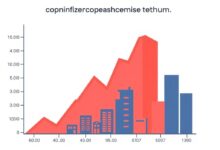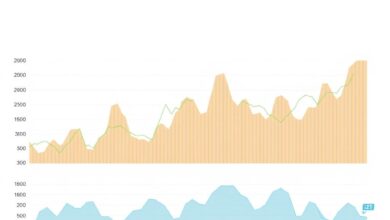Investing in agricultural assets – a green opportunity

Prioritize farmland acquisition to capitalize on the growing demand for sustainable practices within agribusiness. With global populations rising, the need for efficient food production systems intensifies, making agricultural properties a strategic choice for long-term profitability.
Sustainability is not just a trend; it’s a necessity. Modern investors are increasingly drawn to environmentally responsible farming techniques that yield both economic and ecological benefits. By supporting methods that enhance soil health and reduce carbon footprints, you align your portfolio with future market demands while securing robust returns.
Consider diversifying your investments by looking into organic and regenerative farming initiatives. These approaches not only boost crop yields but also appeal to an expanding consumer base that values sustainability. The intersection of ethical farming practices and financial performance creates a unique opportunity for those willing to engage with this evolving sector.
Identifying Profitable Crops
Focus on high-demand varieties such as organic vegetables and specialty grains, which often yield higher returns. Research local market trends to determine what crops consumers are seeking. Consider regions with favorable climates for specific crops; for instance, tomatoes thrive in warm areas, while leafy greens prefer cooler climates.
Diversification is key. Planting a mix of crops can mitigate risks associated with price fluctuations and pest outbreaks. Evaluate the profitability of perennial plants like berries or nuts, which can provide ongoing income over several years.
Utilize precision farming techniques to enhance crop productivity while minimizing resource use. This approach not only aligns with sustainability efforts but also boosts profit margins by optimizing input costs on farmland.
Engage with agribusiness networks to gain insights into emerging trends and successful case studies. Attending agricultural expos or workshops can expose investors to innovative practices that drive profitability.
Analyze soil health and invest in amendments that improve fertility, which can lead to better crop yields. Soil testing will help identify nutrient deficiencies and guide effective fertilization strategies.
Lastly, consider the potential of value-added products derived from raw crops, such as jams, juices, or dried foods. This strategy can significantly increase revenue streams while enhancing market appeal.
Understanding Soil Health
Prioritize soil testing to assess nutrient levels and pH balance, which directly influences crop productivity. Regular analysis allows for tailored amendments that enhance soil fertility and overall health.
Utilize cover crops to improve organic matter content and prevent erosion. This practice not only enriches the soil but also fosters beneficial microbial communities essential for nutrient cycling.
Implement crop rotation strategies to break pest and disease cycles while promoting biodiversity. Rotating different plant families helps maintain soil structure and fertility, leading to better yields over time.
Incorporate conservation tillage methods to minimize disturbance of the soil profile. Reduced tillage can enhance carbon sequestration, contributing to long-term sustainability in farming practices.
Invest in organic amendments like compost or biochar. These materials can significantly boost soil health by increasing water retention, improving drainage, and providing a slow-release source of nutrients.
Monitor moisture levels through advanced irrigation techniques to optimize water usage and prevent salinity issues. Adequate water management is crucial for maintaining healthy farmland ecosystems.
Engage in integrated pest management (IPM) practices that focus on ecological balance rather than chemical interventions. This approach protects beneficial organisms that contribute to soil vitality while managing harmful pests effectively.
Establish partnerships with agribusiness experts who specialize in regenerative practices. Their insights can lead to innovative solutions that enhance both profitability and environmental stewardship on your land.
Aiming for high returns requires a commitment to continuous improvement of soil health, ensuring that farmland remains productive for generations while aligning with sustainability goals in agriculture.
Leveraging Technology Solutions
Utilize precision agriculture technologies to enhance productivity and efficiency on farmland. Drones equipped with imaging capabilities can monitor crop health, enabling timely interventions that maximize yields. Implementing IoT sensors offers real-time data on soil moisture and nutrient levels, allowing for optimized irrigation and fertilization practices.
Invest in software platforms that analyze market trends and consumer preferences. These tools provide insights into profitable agribusiness opportunities by predicting demand shifts, ensuring higher returns on cultivated crops. Blockchain technology enhances supply chain transparency, fostering trust between producers and consumers while reducing waste.
Engage with mobile applications designed for farmers, providing access to agricultural best practices, weather forecasts, and pest management strategies. This empowers stakeholders at all levels to make informed decisions, ultimately contributing to the sustainability of farming operations.
Adopting automation through robotics can streamline labor-intensive tasks such as planting and harvesting. This not only reduces operational costs but also mitigates risks associated with labor shortages, enhancing overall output consistency.
Leverage big data analytics to assess long-term performance metrics of various crops across different environmental conditions. This approach enables informed crop rotation strategies that maintain soil health while maximizing financial returns from investment in cultivated land.
Diversifying Investment Strategies
Consider allocating funds across various agribusiness sectors, such as organic farming, livestock, and aquaculture. This multi-faceted approach mitigates risks associated with market fluctuations while enhancing potential returns. Each sector offers unique opportunities for profit generation, particularly in food production.
Engage in partnerships with local farmers or cooperatives to tap into their expertise and share resources. This collaboration can lower operational costs and provide access to a broader market, thereby increasing profitability. Investing in farmland that supports diverse crops can further stabilize income streams.
Explore alternative investment vehicles like agricultural ETFs or REITs focused on farmland holdings. These options allow for exposure to the agribusiness sector without the need for direct management of land or crops. They also offer liquidity that traditional investments may lack.
Utilize data analytics to identify trends in consumer preferences and emerging markets. By aligning investment choices with these insights, you can target profitable segments of the food industry that are poised for growth.
Incorporate sustainable practices within your investment strategy. Farms adopting eco-friendly methods often see higher demand for their produce, which translates to better returns over time. Additionally, consider regenerative agriculture techniques that restore soil health while boosting productivity.
Lastly, keep an eye on global commodity prices and trade policies affecting food supply chains. Staying informed about these factors will enable timely adjustments to your investment portfolio, maximizing both security and profitability in your ventures into agribusiness.
Evaluating Market Trends
Focus on understanding consumer demand for food products and the impact of sustainability practices in agribusiness. Analyze trends that indicate a shift towards organic produce, plant-based diets, and regenerative farming methods. These shifts can drive profitability within farmland investments.
- Market Research: Conduct surveys to gather data on consumer preferences and purchasing habits. Track changes in dietary trends, especially towards health-conscious choices.
- Price Volatility: Monitor fluctuations in crop prices due to weather conditions, trade policies, and global supply chain issues. Use this data to predict potential profit margins.
- Sustainability Premium: Identify markets willing to pay more for sustainably produced food. This premium can enhance returns on investments in eco-friendly farming operations.
Stay informed about regulatory changes affecting agricultural practices. Legislation aimed at promoting sustainability can influence market dynamics significantly.
- Diversify Crop Selection: Invest in a mix of traditional and high-demand crops based on current market analysis to mitigate risks associated with price drops.
- Consumer Engagement: Build brands that resonate with environmentally conscious consumers by highlighting sustainable practices used in your farmland operations.
Utilize technology to gather real-time data on crop performance and market conditions. Data analytics tools can offer insights into which crops will yield the highest returns based on evolving trends.
A continuous assessment of these factors will position you advantageously within the agribusiness sector, ensuring robust performance across varied economic climates.







